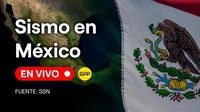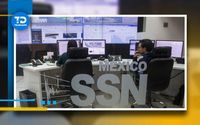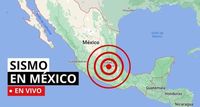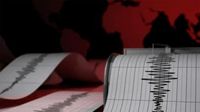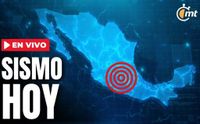On March 26, 2025, Mexico experienced significant seismic activity, highlighted by a magnitude 4.2 earthquake that struck 95 kilometers southeast of Salina Cruz, Oaxaca, at 12:01 PM local time. This earthquake, recorded by the Servicio Sismológico Nacional (SSN), occurred at a depth of 16.1 kilometers and was one of several tremors reported throughout the day.
The SSN reported that the earthquake was part of a broader pattern of seismic activity in Mexico, a country situated in the "Cinturón de Fuego" or "Ring of Fire," an area notorious for its high frequency of earthquakes and volcanic eruptions. Mexico is located at the convergence of five tectonic plates: North America, Cocos, Pacific, Rivera, and Caribbean. This unique geological positioning results in over 90 earthquakes annually that exceed a magnitude of 4 on the Richter scale, accounting for approximately 60% of the world's seismic activity.
In addition to the Salina Cruz earthquake, the SSN recorded several other tremors on the same day. A magnitude 3.7 earthquake occurred at 4:43 AM, just 5 kilometers southeast of Rio Grande, Oaxaca, followed by a magnitude 3.3 quake at 4:24 AM, located 8 kilometers southwest of San Jose del Cabo, Baja California Sur. Other notable quakes included a magnitude 4.1 tremor at 2:55 AM, 99 kilometers south of Ciudad Hidalgo, Chiapas, and a magnitude 4.3 earthquake at 12:07 AM, 39 kilometers east of Motozintla, Chiapas.
The SSN utilizes a network of sensors to monitor seismic activity across the country, with a particular focus on coastal areas and regions with known fault lines. Alerts from the Sistema de Alerta Sísmica Mexicano (SASMEX) are disseminated to millions of residents in high-risk zones, including Mexico City, Puebla, and Acapulco. The SASMEX system provides critical advance warnings of seismic events, offering residents between 20 to 120 seconds of notice before the shaking begins, depending on the distance from the earthquake's epicenter.
Despite the advanced alert systems in place, the unpredictability of earthquakes remains a significant challenge. As of now, no technology exists to predict earthquakes with precision. This limitation underscores the importance of preparedness in earthquake-prone regions. The SSN advises residents to maintain emergency kits that include essentials such as water, non-perishable food, flashlights, and first-aid supplies.
In light of the recent seismic events, authorities have reiterated the need for public awareness and readiness. They encourage individuals to develop emergency plans and to practice safety measures during an earthquake. The SSN provides guidelines on how to act during a quake, such as staying calm, taking cover under sturdy furniture, and avoiding windows and heavy objects that may fall.
Moreover, the SSN highlights the distinction between different types of seismic events. While "sismos" is a general term for any ground movement, "temblores" refers to smaller tremors that typically do not cause damage, and "terremotos" are significant earthquakes with the potential for destruction and loss of life.
As Mexico continues to navigate its relationship with seismic activity, the government has announced plans for the first National Drill of 2025, scheduled for April 29 at 11:30 AM. This drill will simulate an 8.1 magnitude earthquake originating in the Gulf of Tehuantepec, aiming to enhance the public's preparedness and the effectiveness of emergency response teams.
In summary, the recent earthquakes serve as a reminder of Mexico's geological realities. With ongoing monitoring and public education, the country aims to mitigate the risks associated with living in one of the world's most seismically active regions.


